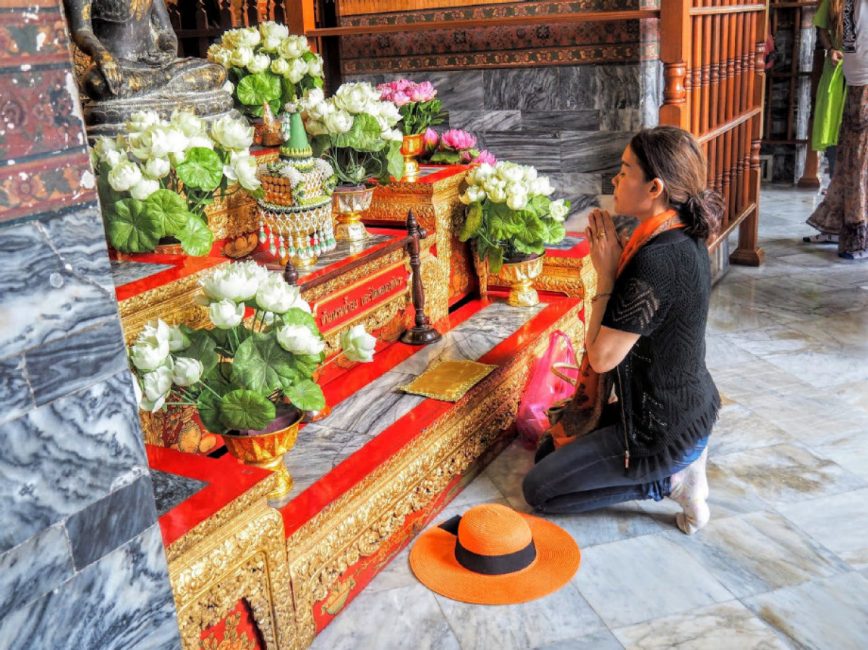
From meditation to mindfulness, to yoga classes and retreats, the Western world seem to be yearning for answers from outside our own cultural traditions.
In Thailand, one of the most Buddhist countries in the world, you can explore the philosophy that has taken hold of the West.
More than 93 per cent of Thailand is Buddhist. Bangkok boasts a density of temples and a skyline full of spindly glistening spires. Every Thai community, no matter how small or how poor, pools its resources to build an ornate temple to ensure everyone has a place to practice.
There are numerous shrines, dangling colourful offerings attached to rear-view mirrors in the city’s tuk-tuks, and the swishes of orange robes as a line of monks goes by.
At Wat Pho, Bangkok’s most visited temple, lies the impressive Reclining Buddha. Stretched out across 46 metres and decked head to toe in gold, you might get the impression that Buddhists worship an all-powerful deity. Theravada Buddhism, the sect most practiced in Thailand, is not a deity-worshipping religion. The resplendent images of Buddha seen all around here are symbolic, not literal. Buddha was a man, not a god.
Across Southeast Asia (in Thailand, Laos, Vietnam and Cambodia) there is a similar refrain: Buddhism is about practising a philosophy of life, not believing in a supernatural entity.
Its three directives seem quite simple, really: lead a moral life, be mindful and aware of thoughts and actions, and develop wisdom and understanding.
In northern Thailand at Doi Suthep in Chiang Mai, a 720-year-old temple on a mountain, the seamless integration of Buddhist ideology and daily life becomes even clearer.
Perhaps intentionally, the 309 steep steps to reach the temple entrance force visitors to slow down and become more aware of their surroundings.
There are, of course, crowds of tourists. But there are just as many Thais, going about daily rituals, quite indifferent to the picture-snapping hoards.
At the centre of the complex we witness monks chanting in an offering ceremony. A glut of tourists peers into the small hall with cameras at the ready. Our guide says Buddhism does not shut people out and everyone is welcome here.
Buddhist ideology isn’t contained to temple life, either.
Many Thais grow jackfruit trees as a symbol of support — the name for jackfruit in Thai literally means support. Likewise, the purchase of eels is considered a form of good luck, as the name for eel in Thai means “slippery,” that things will come to you easily.
There are between 200,000 and 300,000 actively practising monks in Thailand at any given time, and many more who have practised at some point in their lives. Many women prefer to marry men who have been monks since it’s a tough ordeal that should instil good morals.
You don’t need expensive yoga pants and cold-pressed juices to pursue nirvana here. Buddhism in Thailand is about how you live your whole life, not just parts of it. It exists in every moment, from deep meditation to scrubbing the floors.




